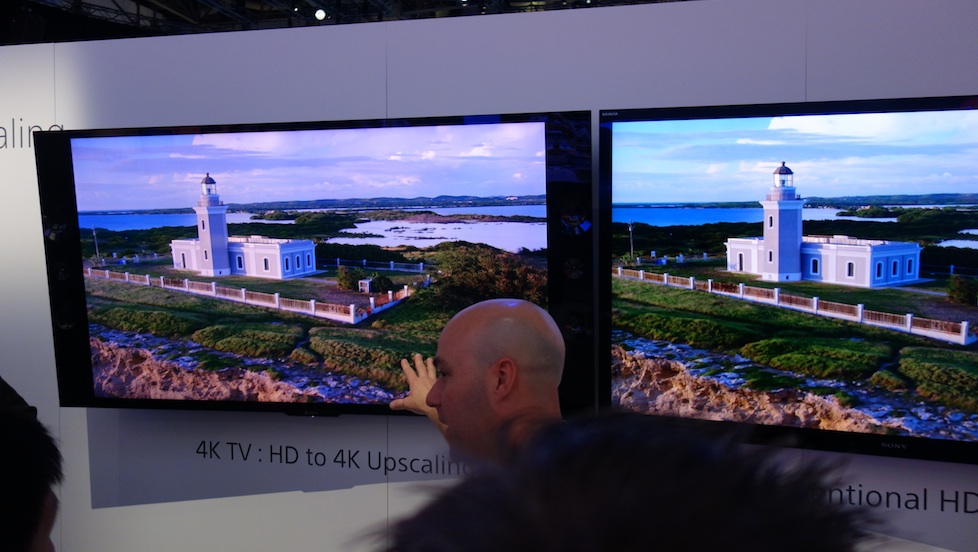
The TV industry has a problem. Many of us already have high definition TVs and we’re so happy with the picture quality that we have no desire to upgrade to a newer model. During the past three CES shows, the industry tried to lure us into stores with 3D sets but consumers didn’t take the bait. The TV companies even sweetened the deal by getting rid of those expensive active 3D glasses and offering sets that use cheap (and lighter) passive glasses like the ones they loan you at the movie theater, but even that didn’t cause people to jump on the 3D bandwagon.
The word 3D is barely being uttered at CES 2013, but just about all the major TV makers are talking about 4K or ultra-definition HDTV that has four times the resolution of those 1080p sets many of us now own. That’s a lot of pixels, which means the picture will be sharper not just when you’re sitting several feet away from the set but even if you get up close.
But most us don’t get all that close to big screen TVs. The 4K sets being shown at CES are big. Samsung has an 85 inch set, Sony is already selling an 84 inch model. About the smallest set you’ll find is 55 inches but even with that size screen, people tend to sit a bit from the screen. I have a 55 inch 1080p set perched several feet in front of my living room couch so I rarely get close enough to my TV to notice any gaps between pixels.
Is seeing believing?
They say that seeing is believing so to prove how great these new TVs are, all of the companies are displaying stunning content, recorded in 4K and designed to impress viewers. The 4K TVs at the Sony booth were showing dazzling colors, often over saturated to exaggerate the vivid hues. It’s hard not to be impressed.
But the reality is that 4K content isn’t generally available to the public. There isn’t yet a standard for 4K Blu-Ray discs and don’t expect the broadcast industry to jump on 4K until there are enough sets out there to make it worth their while. Even then, it will take a few years.
Taking advantage of the fact that it owns its own movie studios, Sony is trying to jump start content by re-rendering some of its own films into 4K and encouraging short film makers to create content. But it will still be awhile before there is enough native 4K content out there to give viewers a lot of choice of programming.
Upscaling
So the current sales pitch is based on the 4K TVs ability to upscale existing content to look better than it does on regular hi-def TVs.
At the Sony booth at CES, there are a pair of TVs showing identical 1080p content. One is a Sony 4K set and the other is a Sony 1080p set. Both sets are clearly marked so viewers know which is 4K and which is 1080p and if you look closely you can tell that 1080p content looks better on the 4K set. How much better is a matter of opinion. On a scale of “slightly” to “a lot,” I’d say the 4K set looked somewhat better but the difference didn’t blow me away. I wish they hadn’t marked the sets because I bet some people wouldn’t even be able to tell which was better based on a quick look.
Of course, if price weren’t a consideration, I’d be happy to swap out my 1080p for a 4K model, but price is a huge issue here. Sony’s 84-inch XBR-84X900 4K Ultra HD TV sells for $24,999.99 on Sony’s website but I’m told you might be able to pick one up for as little as $20k if you shop around. At its CES press conference Sony announced that it will ship 60 and 55 inch models later this year at a price which one Sony spokesperson referred to as “attainable.”
But “attainable” is a relative term so until these sets come way down in price (which will only happen if they become mass produced) I have no plans to attain one.